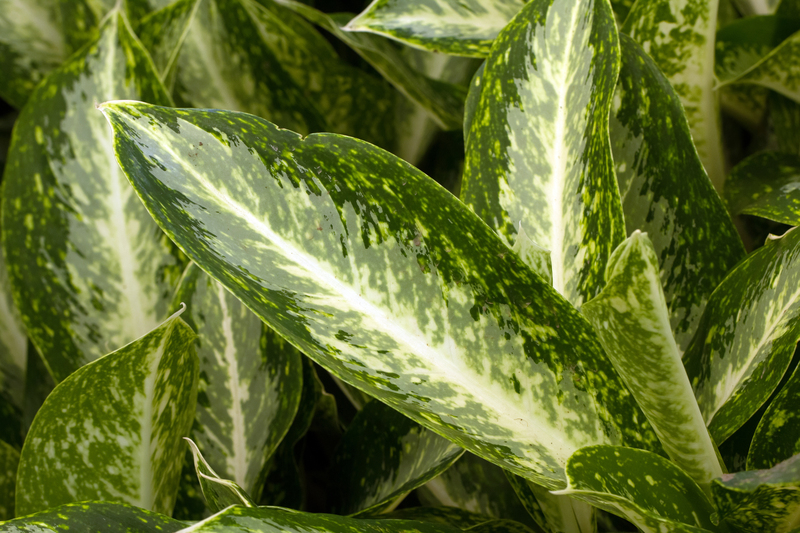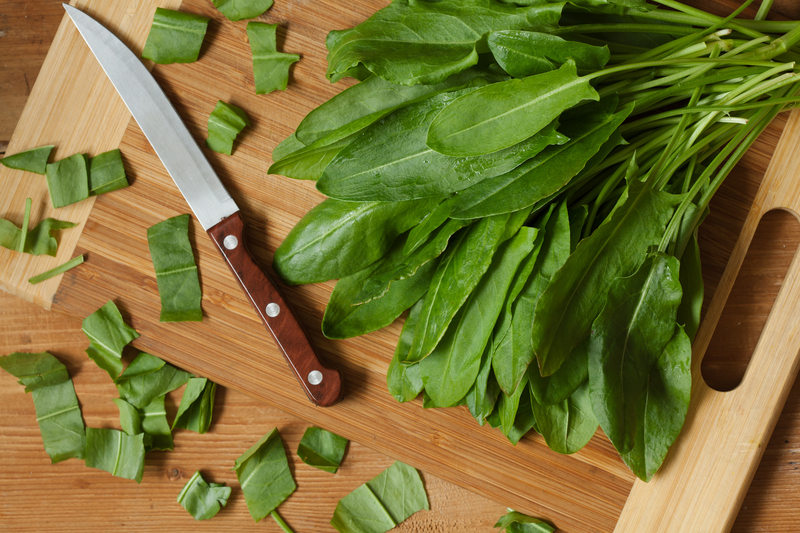Three Quick and Clever Tips for a Moveable Garden Setup
Modern gardening is more dynamic than ever, and the moveable garden setup is surging in popularity for good reason. Whether you're working with limited outdoor space, a rented property, or simply want the flexibility to redesign your plant haven at will, mobile gardening empowers you to adapt, experiment, and thrive. In this comprehensive guide, we'll explore three ingenious strategies to create a mobile-friendly garden that can flourish wherever life takes you.

Why Opt for a Mobile Garden Design?
Traditional gardens are permanent, rooted to the landscape. Moveable gardens, however, offer flexibility, adaptability, and creative freedom. They're ideal for:
- Urban dwellers with balconies or patios
- Renters unable to make permanent changes
- Gardeners wanting to optimize sunlight exposure
- Those wishing to redecorate or reorganize easily
Tip 1: Embrace Versatile Container Gardening
Why Containers Are the Cornerstone of a Mobile Garden
The backbone of any moveable garden setup is container gardening. Containers allow you to cultivate a vibrant selection of flowers, herbs, and vegetables, all in formats that can be shifted with ease. Here's how to maximize mobility with containers:
- Opt for Lightweight Materials: Choose planters made from plastic, resin, fabric grow bags, or lightweight fiberglass. These are easier to lift and handle than traditional terracotta or ceramic pots.
- Ensure Good Drainage: Mobile doesn't mean messy! Select containers with proper drainage holes to avoid waterlogging, which can inhibit plant growth and make pots heavy.
- Consider Self-Watering Pots: For those frequently relocating their garden, self-watering containers minimize the risk of forgotten watering sessions and help maintain consistent moisture levels.
- Mix and Match Sizes: Blend small and large containers to accommodate a range of plant types, from petite herbs to robust tomato vines, all moveable based on your needs.
Smart Placement and Movement
To further improve your mobile garden setup, consider outfitting pots with rolling plant caddies or trays. This addition allows you to move heavier containers effortlessly, and it's especially useful for maximizing sunlight access throughout changing seasons.
Tip: Arrange your containers so your tallest plants don't block sunlight for shorter companions, and don't hesitate to reorganize as your plants grow or your design tastes evolve!
Tip 2: Create Modular Raised Bed Systems
Introduction to Modular Raised Beds
Want more flexibility than traditional garden beds? Modular raised beds are the solution! Designed to be assembled, disassembled, and repositioned, they're a game-changer for the portable garden enthusiast.
- Materials Matter: Choose lightweight, durable materials like recycled plastic, metal, or UV-stabilized wood. Many modern kits snap together without the need for special tools, making them easy to relocate.
- Interlocking Designs: Some raised bed brands offer interlocking or stackable pieces that enable creative, custom layouts tailored to your available space--indoors or out.
- Move with the Sun: One of the best features of modular systems is the ability to reposition your beds seasonally, ensuring your plants enjoy optimal sunlight and protection from harsh weather.
- Combine with Smart Irrigation: Pair your modular beds with drip irrigation hoses that use quick-connect fittings, so you can move the setup without elaborate disassembly.
Additional Perks of Portable Raised Beds
Modular beds raise plants off the ground, promoting better drainage and minimizing weed intrusion. This enhances root health and boosts your overall harvest. Plus, you can elevate beds to the perfect working height, reducing back strain and making gardening enjoyable for everyone, regardless of mobility.
Tip 3: Utilize Mobile Vertical Gardening Structures
Going Vertical for More Yield in Less Space
When square footage is precious, vertical gardening provides big results in a compact and moveable format. Vertical planters--such as stacked pots, trellises, and wall systems--are perfect for small balconies, patios, or even indoor corners. Here's how to make them work:
- Stackable Tower Planters: These allow you to grow a variety of crops in minimal floor space. Many models are modular and lightweight, so you can easily move them to chase the sun or shelter from storms.
- Mobile Trellis Systems: Place trellises in lightweight pots or build rolling frames planted with peas, beans, cucumbers, or flowering vines. These setups offer dramatic vertical interest and can be shifted if light or wind conditions change.
- Wall-Mounted Pocket Gardens: Felt or fabric wall planters bring herbs, strawberries, or succulents right to your door (or even indoors), and can be rehung or relocated as needed.
- Movable Screens for Privacy: Arrange trellised plants as living screens. These offer privacy on balconies and patios, plus they can be rearranged for seasonal needs or events.
Design and Maintenance Tricks
Keep vertical planters close to water sources for easy maintenance. Use cascading plants like herbs, strawberries, or trailing flowers at the edges to soften the design, or incorporate edible and ornamental varieties for a multi-purpose garden that packs a visual punch.
Tip: Treat the vertical elements as movable "garden art." Refresh your arrangements by rotating crops, updating plant color palettes, or swapping modules seasonally.
Bonus Ideas for Moveable and Adaptable Garden Spaces
Wheeled Planters and Garden Carts
Go beyond pots: use wheeled troughs or carts as mobile garden beds, which can be pulled into direct light or stored in the shade during heatwaves. These are particularly effective for larger crops or when you need to clear space in a hurry.
Garden Furniture with Hidden Planters
Combine relaxation and productivity by choosing benches, tables, or shelves with integrated planter boxes. Many are designed to be lightweight and easy to rearrange--perfect for small patios or decks.
Upcycling for Movability
Repurpose old buckets, baskets, drawers, or crates as mobile plant homes. Add handles or attach caster wheels to boost portability. This not only saves money but also lends rustic charm and reduces waste.
Care and Maintenance Tips for Your Moveable Garden
Watering Considerations
Moveable gardens often dry out faster than traditional beds. To prevent wilted or stressed plants:
- Water frequently, especially during hot spells
- Choose moisture-retentive potting mixes
- Add mulch to container surfaces to conserve water
- Consider slow-release watering globes or automated drip systems
Nutrient Management for Portable Gardens
- Because mobile planters have limited soil volume, they require more frequent feeding.
- Mix organic compost or slow-release granular fertilizer into your containers for steady nutrition.
- Flush pots with water occasionally to prevent fertilizer and salt build-up.
Pest and Disease Prevention
- Inspect plants regularly for pests or disease.
- If an outbreak occurs, you can isolate the affected pot or rearrange other plants to minimize spread--a key advantage of the portable garden concept.
- Wash containers and tools between crops to keep disease at bay.

Moveable Garden Setup FAQ
-
What are the best plants for a portable garden?
Opt for herbs (like basil, mint, thyme), salad greens (lettuce, spinach), compact vegetables (cherry tomatoes, chili peppers), and decorative flowers (marigolds, pansies). Many dwarf fruit trees also thrive in containers. -
How do I ensure my moveable garden gets enough sunlight?
Observe light patterns and reposition containers or modular beds as needed. Most edible plants need 6-8 hours of light daily--rolling caddies or carts are a great help! -
How do I move a large or heavy container?
Use heavy-duty caster wheels or invest in a dolly for large planters. Alternatively, reduce weight by using lightweight filler material (like recycling bottles) at the bottom of deep containers. -
Can a moveable garden work indoors?
Absolutely! Choose easy-to-move pots, opt for indoor-friendly plants, and provide supplemental grow lighting as needed. Vertical wall planters or hydroponic towers are excellent for interior spaces.
Conclusion: Start Your Clever Moveable Garden Today
Setting up a moveable garden opens a world of creative and functional opportunities for both beginners and seasoned gardeners. By embracing versatile containers, modular raised beds, and innovative vertical gardening techniques, you can design a lush, adaptable green space tailored to any environment.
Remember: Your portable garden setup can evolve with your lifestyle, preferences, and space constraints. Have fun experimenting with new arrangements, plants, and design ideas--the only limit is your imagination!
For more gardening inspiration and practical tips, follow our blog and transform your small space into a moveable oasis!